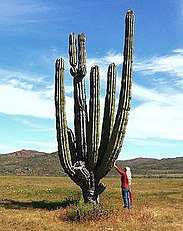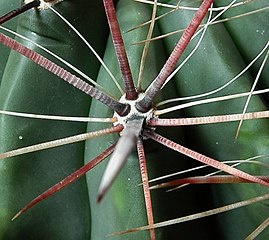I and my classmates went to Jakarta a few days ago, preciesly on Tuesday, 13
December 2016. We have been planning this event from the last month. We went to
Jakarta for vacation. We need entertainment and refreshing to release our
stress after we studied hard for one semester and we have took the last
examination. On this holiday, we went to Kota Tua, Bounce Street, and Dunia
Fantasi in Ancol. We used Nuarta Tour as our tour guide.
On the Desember 13th, we gathered in front of Ganes** Oper**** in Sumatra street
since 5 o’clock. We said goodbye to our family that drove us, and we departed
to Jakarta by bus around 6 a.m. When the bus was up to the highway, we made a
kind of award and we called it “Keset Award” (the name of our class is “Keset
Welcome”). There are 24 nominees in this award. We voted the nominee by uonline
vote using google form. Every winner would be given certificate and when
arrived in Jakarta, the winner had to take a photograph with those certificate.
After the voting is closed, we went to rest area. I and my friends bought some
foods, drinks, and some items that we need in the trip. We rested in the rest
area for around 20 minutes, and we went back to the the bus to continue our
trip. On the bus, the result of the “Keset Award” voting was announced. Here are
the nominee and the winner.
Friday, December 16, 2016
Wednesday, December 14, 2016
Cactus
Cactus is a type of plant that can store large amounts of water and survive in extremely hot and dry habitats. There are around 2000 different species of cactus that differ in size, shape, color and type of habitat. Almost all cacti are native to deserts and dry regions of South and North America. Due to their attractive morphology, cacti can be found throughout the world today. Over collecting and habitat loss are major threats to the survival of cacti in the wild. Certain species are listed as endangered, but luckily, trade of most species of cacti is prohibited by law.Cacti can survive from 15 to 300 years, depending on the species.
Size of cactus depends on the species. Largest species of cactus can
reach 66 feet in height and weigh up to 4800 pounds (when it is fully
loaded with water). Smallest species usually have only few inches in
height. Cactus can have arborescent (tree-like), cylindrical, rounded, irregular
or starfish shape. Surface can be flat or covered with ridges. Cacti have dormant periods and periods of intense growth and blossoming.
Periods of growth require enough water and sunlight and they usually
last shorter than periods of rest.

Cacti can be green, bluish or brown-green in color. They have waxy
substance on the surface which prevents loss of water via transpiration
(loss of water through small holes when outer temperature is high). Size and shape of flower depends on the species of cacti and type of
pollination. They can be white, red, orange, pink or blue in color. Butterflies, bees, moths, bats and hummingbirds are main pollinators of cacti.


Cacti have spines instead of leaves. Spines can be soft or rigid,
straight or curved, arranged in rows or scattered. They can reach 6
inches in length. Spines have two major roles: they prevent loss of water via transpiration and keep the plant safe from animals. Each spine develops from areole, which looks like a bump or nipple-like structure on the surface of the cactus. Spines of cactus can be used in the production of hooks, combs and needles. Fruit can be used as food.



Since cacti live in dry areas, they need to absorb large amount of water
and store it in the stem and roots for the periods of drought. Besides
storing of water, stem plays role in the process of photosynthesis
(production of food by using the sunlight and carbon dioxide). Water from cactus has higher density compared with tap water, but it is safe for drinking.

Roots of cacti are located few inches underground, but they can reach 7
feet in diameter because water easily passes through the sand.
References:
1. http://www.softschools.com/facts/plants/cactus_facts/501/
2. https://en.wikipedia.org/wiki/Cactus
CACTUS QUIZ
1. Where is the habitat of cacti?
a.
Dry and hot area
b.
Cold area
c.
Rainy forests
d.
Moist soil
e.
North pole
2. Where is cactus store most of the
water for the drought periods?
a.
On the spines
b.
On the flower
c.
On the stem and roots
d.
On the leaves
e.
On the areoles
3. Based on the above article, how tall
is the largest species of cactus?
a.
5 feet
b.
2 feet
c.
100 feet
d.
20 feet
e.
66 feet
4. Here are some main pollinators of
the cacti, except..
a.
Butterflies
b.
Bees
c.
Moths
d.
Bats
e.
Snakes
5. What part of the cactus that can
be used as food?
a.
Stem
b.
Spine
c.
Flowers
d.
Fruit
e.
Root
6. What is the function of spines?
a.
Prevent loss of water via transpiration
b.
Store water
c.
Make the cactus colorful
d.
Nourish the cactus
e.
For fertilization
7. What is false statement on these
statements below
a.
Roots of cacti can reach 7 feet
b.
Cacti live in dry areas
c.
Cacti store the water on the stem and roots
d.
There are 100 species of cactus in the world
e.
Size of cactus depends on the species
My Inspiring Figure
One of my future goal is to be an architect. There is someone that inspiring me to be an architect. He is one of the Indonesian architect. His name is Yu Sing.
 Yu Sing was born in Bandung, West Java, Indonesia in 1976. He graduated from Institut Teknologi Bandung in 1999, majoring Architecture Engineering.
Yu Sing was born in Bandung, West Java, Indonesia in 1976. He graduated from Institut Teknologi Bandung in 1999, majoring Architecture Engineering.
I like Yu Sing because he has committed to build low-cost housing for the people. Yu Sing also have idealism that the concept of the architect should not always be the property of the rich. I am also fascinated with Yu Sing architectural design inspired by traditional houses in various regions in Indonesia such as the Rumah Betang, Rumah Panggung, Rumah Terapung, etc.
Here are some architectural designs by Yu Sing and team.
1. Rumah ranting
.jpg) There are many waste materials used to build this house
There are many waste materials used to build this house
2. Rumah kampung

 Most of the material used in this house are woods. These materials are widely used for people's homes. These materials are also known as the "material of the people". In this house there are no expensive materials.
Most of the material used in this house are woods. These materials are widely used for people's homes. These materials are also known as the "material of the people". In this house there are no expensive materials.
3. Rumah lengkung


There are still many designs that have built by Yu Sing and team. All of them are very interesting and I like them very much.
References:
1. http://majalahasri.com/yu-sing-arsitek-muda-yang-progresif/
2. http://rumah-yusing.blogspot.co.id
3. http://nisyeworu.blogspot.co.id/2012/07/mengenal-yu-sing.htm
4. https://www.facebook.com/Akanoma-145341738911236/

I like Yu Sing because he has committed to build low-cost housing for the people. Yu Sing also have idealism that the concept of the architect should not always be the property of the rich. I am also fascinated with Yu Sing architectural design inspired by traditional houses in various regions in Indonesia such as the Rumah Betang, Rumah Panggung, Rumah Terapung, etc.
In 2008, answering his life long search for meanings, Yu Sing established akanoma, an independent architecture design studio that provides affordable designs for the middle and lower income families. He has also continuously been working with young apprentices and students catering the dream of middle-lower income families to have their own architect-designd houses.
By the year 2009, Yu Sing published ‘Mimpi Rumah Murah’, a book of affordable houses.
Akanoma itself has four main design philosophy:
- Put forth architecture for all
- Bring traditional architecture forward
- Build nature-culture-economy-architecture interdependency
- Promote eco-tourism along the locals
Here are some architectural designs by Yu Sing and team.
1. Rumah ranting
.jpg)
2. Rumah kampung

3. Rumah lengkung


This home design is
centered in the middle of the garden with the spaces around them and surrounded
by front garden and a back garden. Spaces are arranged circular-curved, and a park
centered in the middle as a point of interest.
There are still many designs that have built by Yu Sing and team. All of them are very interesting and I like them very much.
References:
1. http://majalahasri.com/yu-sing-arsitek-muda-yang-progresif/
2. http://rumah-yusing.blogspot.co.id
3. http://nisyeworu.blogspot.co.id/2012/07/mengenal-yu-sing.htm
4. https://www.facebook.com/Akanoma-145341738911236/
Subscribe to:
Comments (Atom)